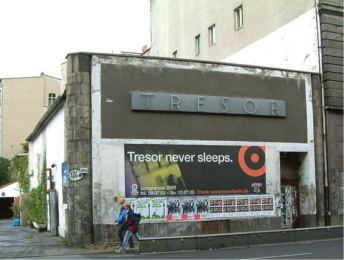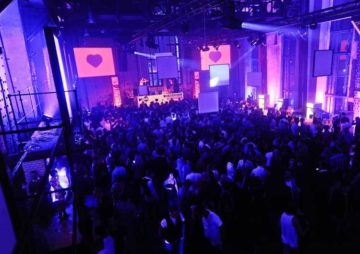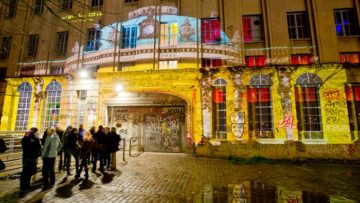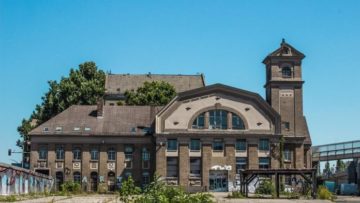When the Berlin Wall fell back in 1989 a new culture rose from the ashes of war and hate, creating a scene inspired by techno music in Detroit and Chicago of the mid 1980’s. From that point nightlife in Berlin would never be the same, with the creation of nightclubs that held marathon parties lasting all weekend.Today we see an industry that has continued to thrive with venues like Berghain and Berlin’s newest venue OST.

After the fall of the Berlin wall and the east and west became unified, there was a huge rise in the number of abandoned buildings including bunkers, hangers and even power plants. These structures became the very basis of a movement that provided the youth with free, unrestricted venues where they could host illegal parties. It was here that a different kind of techno music developed, unlike its predecessors in Chicago and Detroit, Berlin techno featured a more electronic sound with fewer vocals and more bass.
There were three big players in the nightclub scene that really got the ball rolling; these were Tresor, Der Bunker and E-werk. Tresor (which means safe in German) opened its doors back in March 1991 in the vaults that lay underneath a former Wertheim department store. It was originally licensed as an art gallery to provide a screen for the authorities, with the initial promoters expecting the operation to close down at any time. However Tresor continued to thrive due to the unique sound environment that a bank safe can provide and it’s connection to the Detroit music scene.
Der Bunker (the bunker) was another unique nightclub spawned during the unification era. Created by Nazi Germany, the bunker originally provided a shelter for the Reichsbahn passengers until Soviet forces captured it and used it as a prisoner of war camp. In 1992 it became a nightclub where it held intense hard-core techno parties that featured four floors of entertainment. Der Bunker continued to operate consistently until 1995 when a raid hit it, after that events became more inconsistent right up to 1996 when it was shut down. The space now serves as an art gallery.
Finally the last of the three most influential nightclubs was E-werk, another techno music nightclub that operated out of an old electrical substation and ran from 1993 to 1997. E-werk featured a variety of permanent DJ’s as well as international acts that performed at the various different events. Friday nights tended to be the big ones, with the ‘Dubmission’ parties. E-werk was eventually closed in 1997 and now operates as a multi-level venue.

Not only did these three clubs provide a new form of liberation for a long-oppressed generation, they also paved the way for a new generation of a world-renowned culture with a global pilgrimage and a brand new sound for techno music.
These three clubs also inspired new venues, including the techno behemoth Berghain which is located in the Friedrichshain area of Berlin. Berghain is held in the same regards that a church would be held in Italy, especially after the Berlin-Brandenburg Fiscal courts ruled that Berghain would pay a culture tax instead of an entertainment tax from 2016. This allowed Berghain an economic lifeline, paying a lower tax rate on par with theatres, concert venues and museums.

Some of the main factors that make Berghain great is its no mirrors in the bathroom policy, it’s strict door policy that protects its alternative attitude, and its marathon opening hours that can keep the party going for days on end. However the main features that keep the crowds coming back for more is the main dance floor and Panorama bar. This dance floor puts the focus on hard techno with acts like Gesaffelstein, while the Panorama bar focuses more on melodic house music with acts like Ricardo Villalobos.
While nightclub giants like Berghain continue to thrive, Berlin is making way for brand new techno sanctuaries including Club OST, a former power station that was originally built in 1903. The club is situated in the famous Friedrichshain clubbing zone and was home to the former nightclub Magdalena. The club will feature multiple dance floors with the most impressive feature being it’s Pioneer Pro Audio sound system designed by acclaimed U.S. sound guru Gary Stewart. The club will open its doors on November 4th with a soft open featuring European artist Vakula.

The EDM culture in Berlin continues to rise, bringing in thousands of tourists to the city every year. The culture still continues to find new and exciting ways to host parties whilst also sticking to its roots of raw techno that hopefully will continue to entertain generations to come.






